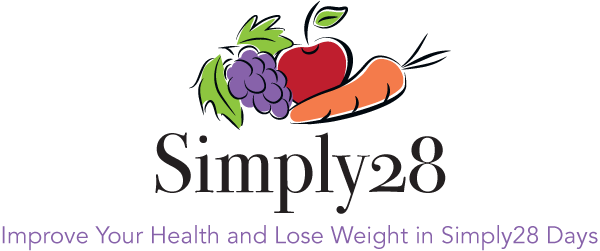Maintaining the right balance between acidity and alkalinity in the body is essential for overall health. While many people associate pH levels with swimming pools or soil, our bodies also function within a delicate pH range. But what does this mean, and how does diet and lifestyle affect our internal pH balance? Let’s explore the science of pH, its impact on health, and how you can make choices that support a balanced system.
By adopting the Simply28 principles with the Meal Planning Made Easy Course, you can create a lifestyle that promotes optimal metabolic function, reduces inflammation, and improves overall well-being. Click the Link to Learn More.
What is pH?
pH, or potential hydrogen, is a scale used to measure how acidic or alkaline a substance is. The scale ranges from 0 to 14, where values from 0 to 6.9 are acidic, 7 is neutral, and 7.1 to 14 is alkaline (or basic). For perspective, some common substances and their approximate pH levels include lemon juice at pH 2, vinegar at pH 3, coffee at pH 5, pure water at pH 7, human blood at pH 7.4, baking soda at pH 9, seawater at pH 8, and bleach at pH 13.
How pH Relates to the Body
A healthy body tends to be slightly alkaline, but the key is maintaining balance. Many people mistakenly assume that when measuring pH, they are looking at blood pH, but that’s not the case. Blood pH remains stable at about 7.4—a slight deviation from this can be life-threatening. The body has internal mechanisms, such as kidney function and respiration, to keep blood pH in a safe range. Instead, we measure pH through urine and saliva, which fluctuate based on dietary and lifestyle factors. These readings provide insight into overall health and metabolic function.
pH Balance and External Factors
Just as a swimming pool requires proper pH levels for a safe and clean swimming environment, our bodies rely on a balanced pH for optimal function. Pool water that is too acidic can corrode surfaces and irritate the skin, while water that is too alkaline can lead to cloudy water and scaling. Similarly, our bodies thrive when acidity and alkalinity are balanced. Various factors influence pH balance, including diet, hydration, minerals, stress, exercise, and breathing. Foods can be either acid-producing or alkaline-producing once metabolized. Drinking enough water helps flush out acidic waste. Essential minerals such as magnesium, calcium, potassium, and bicarbonate help neutralize acidity. Chronic stress can contribute to acidity by increasing cortisol levels. Sweating and deep breathing remove acidic waste and improve oxygen levels.
The Dangers of Acidosis
When the body becomes too acidic—a condition known as acidosis—it can deplete essential minerals such as magnesium, calcium, potassium, and bicarbonate. Over time, this can contribute to osteoporosis, low vitamin D levels, hypertension, chronic inflammation, and increased risk of chronic diseases. The Standard American Diet (SAD), which is high in processed foods, refined sugars, and unhealthy fats, tends to be net acid-producing. This diet increases the acid load on the body and may contribute to conditions like joint pain, fatigue, and metabolic imbalances.
Diet and pH Balance
One of the best ways to maintain a balanced pH is by eating a nutrient-dense diet rich in whole, real foods. The Simply28 principles emphasize reducing processed foods and increasing whole, natural ingredients to create a diet that supports metabolic function and overall health. Alkaline-promoting foods include leafy greens, cruciferous vegetables, avocados, berries, cucumbers, lemons, limes, and apple cider vinegar also contribute to alkalinity despite their acidic nature. In contrast, acidic foods, which should be consumed on rare occasion or better yet, avoided altogether, include processed foods such as chips, cookies, and sugary cereals, as well as refined sugars, artificial sweeteners, soda, energy drinks, non-dairy creamers, factory-farmed meats and poultry, and alcohol.
Choosing the Right Foods
Balancing foods that provide necessary nutrients include high-quality meats, fish, poultry, and eggs from grass-fed, wild-caught, and pasture-raised sources, along with healthy fats such as extra virgin olive oil, grass-fed butter, coconut oil, avocado oil, and tallow. A variety of colorful fruits and vegetables along with nuts and seeds, including almonds, walnuts, chia seeds, and flaxseeds, offer essential minerals. Fermented foods such as sauerkraut, kimchi, and yogurt offer additional benefits that support gut health.
Why Some Acidic Foods Are Alkalizing
Lemon juice and apple cider vinegar may seem counterintuitive because they are acidic in nature. However, once metabolized, they have alkalizing effects on the body. This happens because these foods contain alkaline minerals like potassium and magnesium, which help neutralize acid waste and support healthy digestion. Drink a glass of either warm or cold water with 1 to 2 tablespoons of apple cider vinegar or lemon juice each morning for a refreshing drink that helps increase pH and alkalinity while also providing hydration.
Lifestyle Factors That Support pH Balance
Aside from diet, other lifestyle changes can significantly improve your body’s ability to maintain a healthy pH. Hydration is crucial, as drinking filtered water throughout the day helps flush out excess acidity. Practicing diaphragmatic breathing and engaging in aerobic exercise helps remove carbon dioxide, which is acidic. Movement and sweating eliminate acidic waste and improve oxygen flow, while chronic stress can contribute to acidosis. Engaging in meditation, nature walks, or mindfulness practices can reduce stress levels and help maintain pH balance.
The Bottom Line
Our bodies are naturally designed to regulate acidity and alkalinity, but we need to provide the right inputs. The best approach is not extreme alkalinity or acidity but rather balance. By focusing on nutrient-dense whole foods, hydration, movement, and stress management, you can support a naturally healthy pH and reduce the risk of chronic health conditions.
By adopting the Simply28 principles with the Meal Planning Made Easy Course, you can create a lifestyle that promotes optimal metabolic function, reduces inflammation, and improves overall well-being. Click the Link to Learn More.




